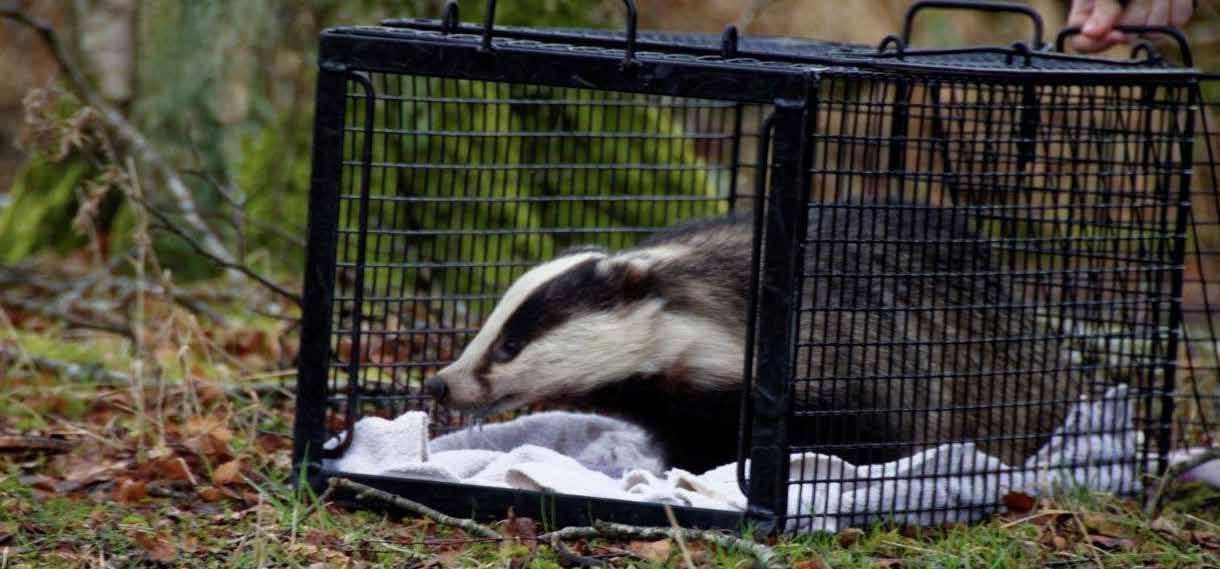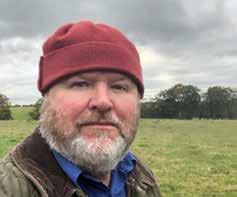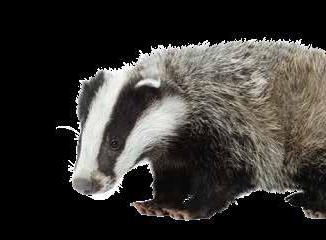
5 minute read
GUEST Q&A
GUEST Q&A: JOHN DARBYSHIRE, ECOLOGIST

Advertisement
Meet John Darbyshire, an independent ecological consultant and lecturer at Edinburgh University. John acts as an expert witness in cases involving wildlife crime and has surveyed the whole of the River Clyde for badger setts – an 800-mile walk to investigate connectivity and meta-populations!
How does what you do help the Scottish SPCA protect animals?
I work with the Society’s Special Investigations Unit, who are experts in bringing animal welfare cases to court. The Scottish SPCA relies on assistance from specialists such as vets and the police. My expertise is in mammals and in particular badgers, and my input contributes to prosecutions which helps to save the lives of badgers, dogs and other species too. Successful law enforcement creates caution and fear for criminals. The more we can bring these people to court, the more we will win over the hearts and minds of humans and push for a more proportionate understanding of the natural world. The Scottish SPCA is a welfare organisation and it exists to educate the public to respect all animal life and in doing so respect the whole environmental network which supports us all. I hope I play a part in this effort.
When you assist the Scottish SPCA in an investigation, what does that typically involve?
I am in regular and close contact with the Special Investigations Unit. We’ve got a well-established working relationship. When they investigate criminal activity, the team make a judgement call on whether they need help based on their own expertise and the benefit an expert may bring in terms of securing a successful prosecution. A call is made and I step in to help. The team do all the ground work such as police liaison and obtaining warrants. I give advice on how I can best assist. We all work together to achieve what we need to. My role is often to identify whether the target animal is a protected species such as a badger, and that the location of the incident is a badger sett in ‘current use’. ‘Current use’ is the phrase used in the legislation, so it is vital this is established at a crime scene or a case involving a badger could fail.
GUEST Q&A: JOHN DARBYSHIRE, ECOLOGIST
Talk us through what it’s like to carry out a species-specific survey.
Surveys for protected species differ. For example, a water vole survey is very different from a badger survey and the surveyor must focus and what we call diagnostics. These are key, tell signs for whatever species we are looking for.
With badgers, I start with the sett and tunnel morphology (their structure). The morphology is checked with a torch to see if it has the characteristic shape of badger, as opposed to, for example a fox or a rabbit. Badgers can dig a sett and foxes can live it, so next I search for badger hairs which are nearly always around a sett entrance. These are diagnostic as they are usually approximately 10cm long, stiff and rough when rolled between finger and thumb.
The SIU team survey too and when out in the field they insert a flag at what they have identified as a diagnostic for me to check. The more diagnostics we find, the more secure the judgement that the location is a sett and in current use. Other diagnostics include prints, paths, bedding and bedding balls, dung pits, and scratching posts. At a recent case a defendant argued that a fox earth was across the river and that he had been digging at it when his dogs broke free, crossed the river and entered the sett. To counter such claims, I survey a wide area and record all the mammal burrows I find. My evidence in court refuted his claim, strengthening the prosecution’s case.
What changes have you seen in Scotland’s ecological landscape during your career
In 1994 I organised a conference aimed at reintroducing pine marten to Clyde Valley woodlands. Delegates said it was best left to the pine marten to find its own way. This year, they have arrived!
This natural re-colonisation is down to increased legal protection. We need to repair Scotland’s natural landscape by planting trees on a massive scale, going further than anything currently being proposed. We need to reconnect fragmented habitats and make crossing roads non-hazardous for all species. I believe we need to reintroduce wolves, bears, lynx and boar. Our uplands are in a great need of a change in management.
The aim is to create functioning and self-sustaining landscape to maximise biodiversity and ecosystem services. Things are changing, but as half of all global biodiversity has disappeared in my lifetime we need to accelerate change now.
Why do you think it is important we protect nature and wildlife?
Humans are wholly reliant on and are part of nature. Everything we have and need is provided by it: clean air, clean water, healthy soil, buildings, machines, fuels, pollination, and everything else - including us, comes from it. If we do not protect and enhance the natural world, we are all in great trouble. We urgently need educated so we can see the natural world not as it is, but as it needs to be.
What’s the most rewarding aspect of your work?
I am an immensely privileged ecologist who roams Scotland searching for species, everyone a diamond. I have accidently extrapolated my childhood pleasure of countryside roaming and turned it into my job. I am able to text a radio programme when hearing bird song to let them know the habitat where the interview took place by linking the song, to the bird, to its habitat. I am able to rebuild thousands of years of landscape change by interpreting the post glacial landscapes; and to see our ancient lost forests and mega fauna.

I surveyed for badgers for years with an individual who announced: “all this survey work and we never see the animal”. A penny dropped for me and I said: “I have spent so many hours of my life watching badgers that I can see them just as if they were here.” As each year goes by, I make more connections from rock to brock and the knowledge that learning is endless, and that I know so little keeps me going.









